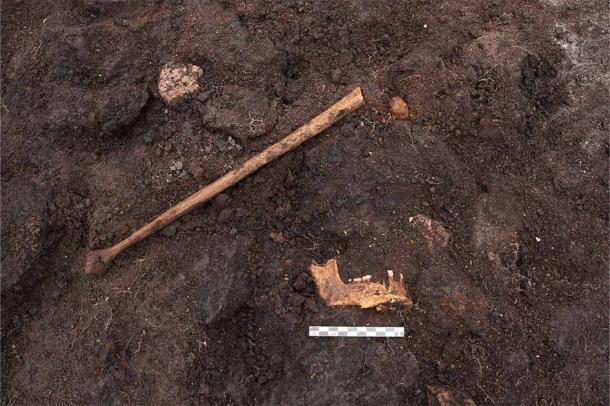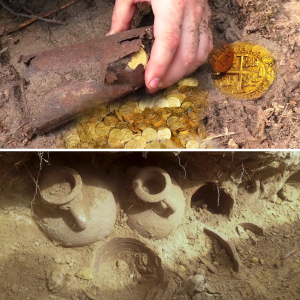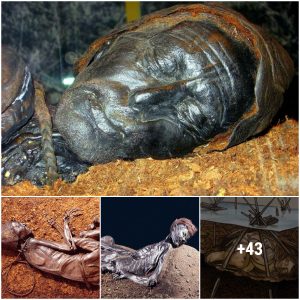For the second time since 1947, a human skeleton has been found in the Egedal Municipality in Denmark – in fact, the remaining fragments of a ‘bog body’. Initially just a femur, a lower jaw with some teeth, legs, and a pelvis, remnants of a human being from ancient times were found. To add to this, the remnants of a flint ax and animal bones were found too, suggesting a ritual sacrifice from around 5,000 years ago, during the Neolithic Age (10,000 BC – 2,200 BC).
Human Sacrifice and Bog Bodies: A Neolithic Tradition?
The person’s gender and age at the time of death remain unknown, but unlike other bodies found across Northern Europe , which accidentally fell into bogs, this one is definitely the result of human sacrifice . In fact, it was common to have the bog area used as a sacrificial area for bodies of animals and humans, along with other objects, in ancient times.
With climate change and global melting of ice cover, more and more bodies and objects are being uncovered across Europe. Several different bog bodies are located in the area, and this is an ongoing tradition stretching all the way back to the Neolithic. Particularly bountiful are bogs in Denmark, Germany, the Netherlands and Britain.
“When we saw the bones, we thought we’re on to something really exciting,” said Emil Winther Struve, a ROMU museum archaeologist in Roskilde, according to the Copenhagen Post . “It was a pretty wild experience – it doesn’t happen very often that you find a bog body. That’s the early phase of the Danish Neolithic. We know that traditions of human sacrifices date back that far — we have other examples of it.”
- 1300-year-old Prehistoric Ski Found in Norway Completes a Pair!
- The Stories Behind Seven Mind Boggling Bog Bodies

When the remains of a jaw came to light, shown here, the archaeologists had no doubt that it was the remains of a human being that had been found. (Lea Mohr Hansen/ ROMU)
The world’s oldest bog body, the so-called Koelbjerg Man, was discovered in Denmark in the 1940s, probably dated to 10,000 years old. One of the most famous bog bodies, the Tollund Man , was also found in Denmark in the 1950s and dates back to 400 BC.
A Test Excavation, An Ancient Settlement
As is customary of Danish law, ahead of the construction of housing development, an archaeological survey of the area is carried out. For this purpose, the bog near the town of Stenløse located on the large island of Zealand, was drained. The test excavation revealed the exciting remains.
However, the cold, bitter Scandinavian winter has struck and the only option is to wait for the ice to thaw and the winter to pass, for the next round of excavations to commence. The other parts of the body lay outside of a protective layer of peat in the bog, which is why there are no remnants left.
Studying the teeth will help determine age, and the pelvis will help determine the sex. The teeth can potentially provide more information about the identity of the deceased individual, which would help unpack why they had been chosen particularly for this human sacrifice.
There are always moral questions and conundrums that archaeologists experience when they uncover the dead like this, particularly because some elements of spiritual and religious sanctity of the dead are disturbed.
Charlotte Haagendrup, the culture committee chairman in Egedal Municipality, seconded Struve’s enthusiasm to learn more. “I think it’s crazy exciting,” she exclaimed to TV 2. “I would like to have ten minutes with the victim and ask: Who were you, what is your story, and how did you end up in the bog?”
With a child’s skull found in the area in 1947, during peat burial in the marsh, the area promises to be historically very exciting. Plans are to make this a sustainable district, with the first housing to be ready by 2025.
“The area has been a good transport corridor, and along it there have been areas that have been good to settle on. In the past we have also found settlements from ancient times, so we know that people have lived here. And an important part of their lives has been making sacrifices. This has been done throughout ancient times, and this is likely to be part of such a ritual”, concludes Struve.
Top image: Archaeologist Lea Mohr Hansen cleans animal bones found together with the human skeleton. Source: Christian Dedenroth-Schou/ ROMU
By Sahir Pandey





